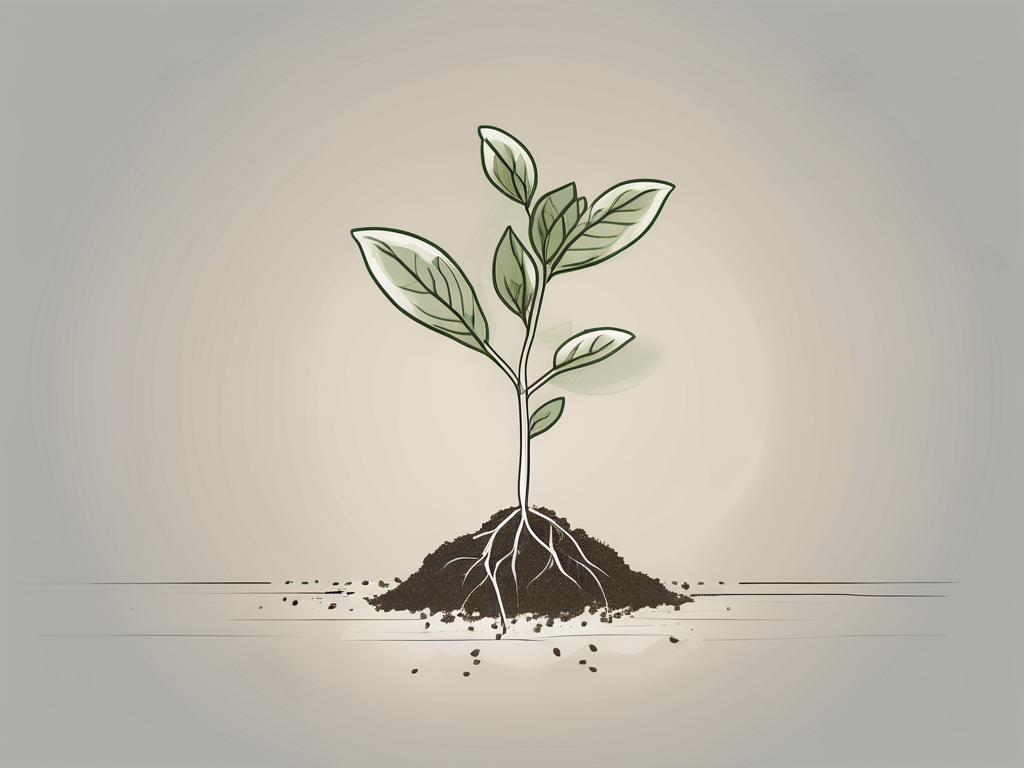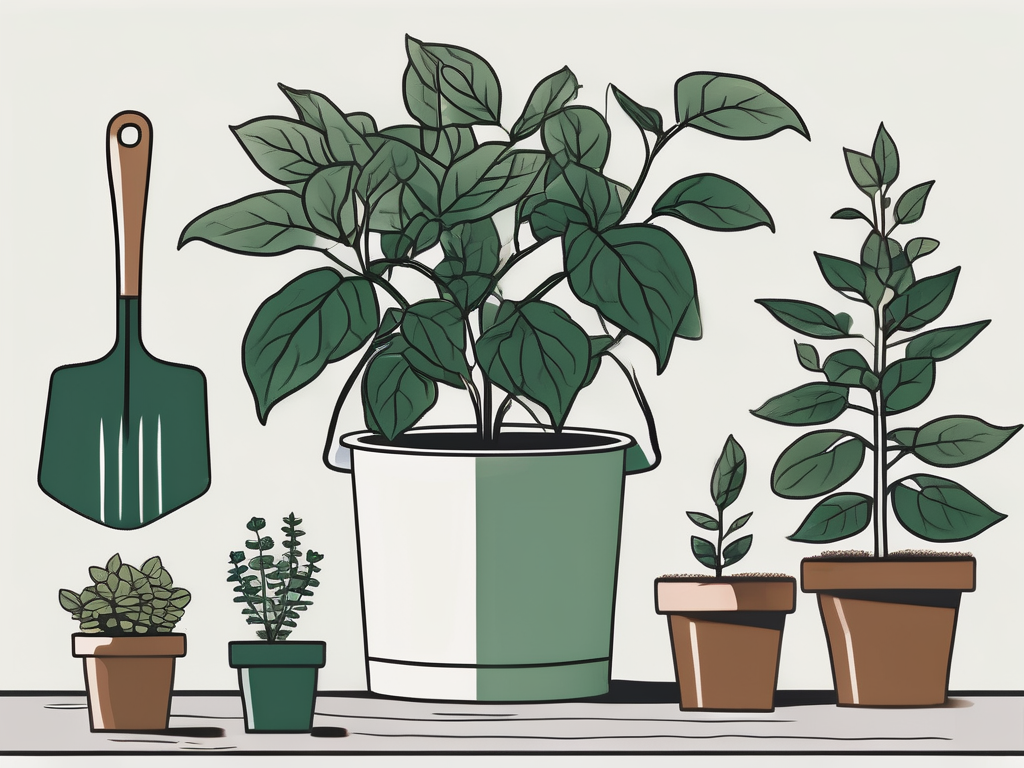
Monstera plants are more than just a trendy houseplant. They offer a plethora of benefits that go beyond their aesthetic appeal. In this comprehensive guide, we'll explore the various advantages of having Monstera in your home, from their history and varieties to their health benefits and care tips.
Understanding Monstera Plants
Monstera plants, with their captivating beauty and unique foliage, have become a favorite among plant enthusiasts worldwide. Let's delve deeper into the origin, history, and different varieties of Monstera plants.
Origin and History of Monstera
Native to the tropical rainforests of Central and South America, Monstera plants have a rich history dating back centuries. These plants were first discovered by European botanists in the 18th century during their expeditions to the New World. The name "Monstera" comes from the Latin word "monstrum," which translates to "monster," referring to the plant's unique and distinctive leaves.
Monstera plants have played a significant role in the cultural and traditional practices of the indigenous people of Central and South America. They have been used for medicinal purposes, as well as in various rituals and ceremonies. The locals believe that Monstera plants possess mystical and protective properties, making them highly revered in their communities.
As European explorers brought Monstera plants back to their homeland, these botanical wonders quickly gained popularity among collectors and plant enthusiasts. The striking appearance of Monstera's large, glossy leaves with their intricate splits and holes made them stand out among other houseplants. This unique foliage earned Monstera the nickname "Swiss cheese plant" or "delicious monster," further adding to their allure.
Today, Monstera plants continue to enchant and fascinate people around the globe. Their popularity has soared, making them one of the most sought-after plants in the market. Whether you're a seasoned plant lover or just starting your green journey, Monstera plants are sure to captivate your heart.
Different Varieties of Monstera
Monstera plants come in various shapes, sizes, and leaf patterns, offering a wide range of options for plant enthusiasts. Let's explore some of the most popular varieties:
1. Monstera deliciosa: This is the most common variety of Monstera, known for its broad, heart-shaped leaves and iconic holes. The leaves can grow to impressive sizes, making a bold statement in any space. Monstera deliciosa is a vigorous grower and can reach heights of up to 10 feet, adding a touch of tropical elegance to your home or garden.
2. Monstera adansonii: Also known as the "Swiss cheese vine," this variety features smaller leaves covered in delicate fenestrations, resembling a piece of Swiss cheese. Monstera adansonii is a trailing plant, making it perfect for hanging baskets or cascading down shelves. Its unique foliage adds a touch of whimsy and charm to any indoor space.
3. Monstera obliqua: Known for its rare and extremely perforated leaves, Monstera obliqua is a highly sought-after variety among plant collectors. Its delicate and intricate foliage creates an ethereal and captivating appearance. Due to its rarity and delicate nature, Monstera obliqua is considered a prized possession among plant enthusiasts.
Regardless of the variety, all Monstera plants share similar growth habits and care requirements, making them suitable for both beginner and experienced plant owners alike. With their stunning foliage and easy-going nature, Monstera plants are sure to bring joy and beauty into any space they grace.
The Aesthetic Appeal of Monstera
Monstera plants have become a staple in modern interior design due to their ability to elevate any space with their bold and tropical allure. Whether your home decor style is minimalist, bohemian, or contemporary, a Monstera plant can add a touch of freshness and vibrancy to any room.
These plants thrive in bright, indirect light, making them perfect for light-filled living rooms, bedrooms, or even offices. With their striking foliage and cascading vines, Monstera plants create a sense of drama and elegance, acting as living sculptures within your home.
Imagine walking into your living room and being greeted by the lush green leaves of a Monstera plant, gently swaying in the breeze. The vibrant colors and unique patterns on the leaves immediately catch your eye, drawing you closer to admire the intricate details. The plant's presence brings a sense of tranquility and connection to nature, creating a harmonious atmosphere in the room.
Not only do Monstera plants enhance the visual appeal of your home, but they also have air-purifying properties. As they photosynthesize, Monstera plants release oxygen and absorb harmful toxins from the air, improving the overall air quality in your living space. This not only benefits your physical health but also contributes to a more serene and refreshing environment.
Enhancing Home Decor with Monstera
When it comes to home decor, Monstera plants offer endless possibilities. Their versatility allows them to complement a wide range of interior design styles. In a minimalist setting, a Monstera plant can serve as a focal point, adding a pop of green amidst a clean and simple color palette. Its large leaves create a sense of balance and harmony, bringing life to the space without overwhelming it.
For those with a bohemian aesthetic, Monstera plants can be incorporated into a lush and eclectic display. Imagine a corner of your room adorned with macrame plant hangers, filled with cascading Monstera vines. The combination of textures and layers creates a cozy and inviting atmosphere, reminiscent of a tropical paradise.
In a contemporary space, Monstera plants can be used to add a touch of nature and softness to sleek and modern lines. Placing a Monstera plant in a minimalist pot on a white marble countertop instantly adds warmth and organic beauty to the room. The contrast between the plant's vibrant green leaves and the clean, minimalist surroundings creates a visually striking and harmonious composition.
Monstera in Landscape Design
Monstera plants are not only confined to indoor spaces; they can also transform outdoor areas into lush tropical retreats. Whether you have a patio, balcony, or garden, incorporating Monstera plants can add a tropical flair and create a tranquil oasis right in your backyard.
When grown outdoors, Monstera plants thrive under partial shade or filtered sunlight. They can be trained to climb trellises or grown as dramatic ground cover, adding layers of greenery to your outdoor landscape. Imagine sitting on your patio, surrounded by the lush foliage of Monstera plants, creating a sense of privacy and serenity. The gentle rustling of the leaves in the wind creates a soothing soundtrack, transporting you to a tropical paradise.
Not only do Monstera plants enhance the aesthetic appeal of your outdoor space, but they also attract wildlife. The large leaves provide shelter and a safe haven for birds, butterflies, and other small creatures. The vibrant flowers that occasionally bloom on mature Monstera plants attract pollinators, contributing to the biodiversity of your garden.
Whether you live in a bustling city or a peaceful countryside, Monstera plants are a versatile option for landscape design. Their resilient nature allows them to adapt to various climates, making them suitable for both urban environments and rural retreats. Incorporating Monstera plants into your outdoor space creates a harmonious blend of nature and design, inviting you to relax and unwind in your own personal oasis.
Health Benefits of Monstera
Air Purifying Properties of Monstera
Besides their visual appeal, Monstera plants offer significant health benefits by improving the air quality in your home. Like other houseplants, Monstera can absorb harmful toxins and release oxygen, enhancing the overall air purity.
Studies have shown that Monstera plants can effectively filter toxins such as formaldehyde, benzene, and trichloroethylene, which are commonly found in household products and indoor pollutants. By purifying the air, Monstera plants can help reduce the risk of respiratory problems and create a healthier living environment for you and your loved ones.
Monstera and Mental Health
Living with plants, including Monstera, can have a positive impact on mental health and well-being. The presence of greenery indoors has been shown to reduce stress, boost mood, and increase productivity.
By creating a calming and relaxing atmosphere, Monstera plants can be a soothing presence in your home. Taking care of these plants and watching them thrive can also provide a sense of fulfillment and connection with nature, contributing to a healthier mindset and improved mental well-being.
Caring for Your Monstera Plant
Ideal Conditions for Monstera Growth
To ensure your Monstera plant thrives, it's essential to provide it with the right growing conditions. Keep your Monstera in a well-lit area, away from direct sunlight that can scorch its leaves. Bright, indirect light is ideal for these plants.
Monstera plants prefer slightly moist soil, but they don't tolerate overwatering. Allow the top inch of soil to dry out before watering, and make sure the pot has drainage holes to prevent waterlogged roots. Regularly misting the leaves can also help increase humidity, simulating their natural rainforest habitat.
Common Monstera Problems and Solutions
Despite being relatively low-maintenance plants, Monstera can encounter a few problems from time to time. One common issue is the presence of pests such as mealybugs and spider mites. Regularly inspect your plant for any signs of infestation, and if necessary, treat them with organic insecticides or gently wipe the leaves with soapy water.
Yellowing or browning leaves can indicate over or underwatering. Adjust your watering routine accordingly, making sure not to let the plant sit in stagnant water. Additionally, ensure your Monstera is not exposed to extreme temperature fluctuations or drafts, as this can stress the plant and lead to leaf damage.
Propagating and Repotting Monstera
Steps to Propagate Monstera
A fascinating aspect of Monstera care is the ability to propagate new plants from existing ones. Propagation allows you to expand your Monstera collection or share the joy of plant parenthood with friends and family.
To propagate a Monstera plant, start by selecting a healthy stem with several nodes and aerial roots. Carefully cut below a node, ensuring you have at least one leaf attached. Place the cutting in a glass of water or directly into a well-draining potting mix. Keep the cutting in a warm and humid environment, providing indirect light, and misting regularly. With time, roots will develop, and a new Monstera plant will begin to grow.
When and How to Repot Monstera
As your Monstera plant matures, it may outgrow its current pot, leading to root congestion and restricted growth. Repotting your Monstera allows it to develop a stronger root system and ensures it has enough space to thrive.
It's best to repot your Monstera during the spring or early summer when the plant is actively growing. Choose a pot that is one size larger than its current container, ensuring it has drainage holes. Gently remove the plant from its old pot, loosen the root ball, and place it in the new pot with fresh potting soil. Water thoroughly and provide the plant with a supportive stake if needed.
In conclusion, Monstera plants are more than just a beautiful addition to your home. They offer a range of benefits, from their fascinating history and wide variety of species to their positive impact on air quality and mental well-being. By understanding how to care for and propagate Monstera plants, you can cultivate thriving and visually captivating green companions. So why not bring a touch of the tropics into your life with a Monstera plant?












